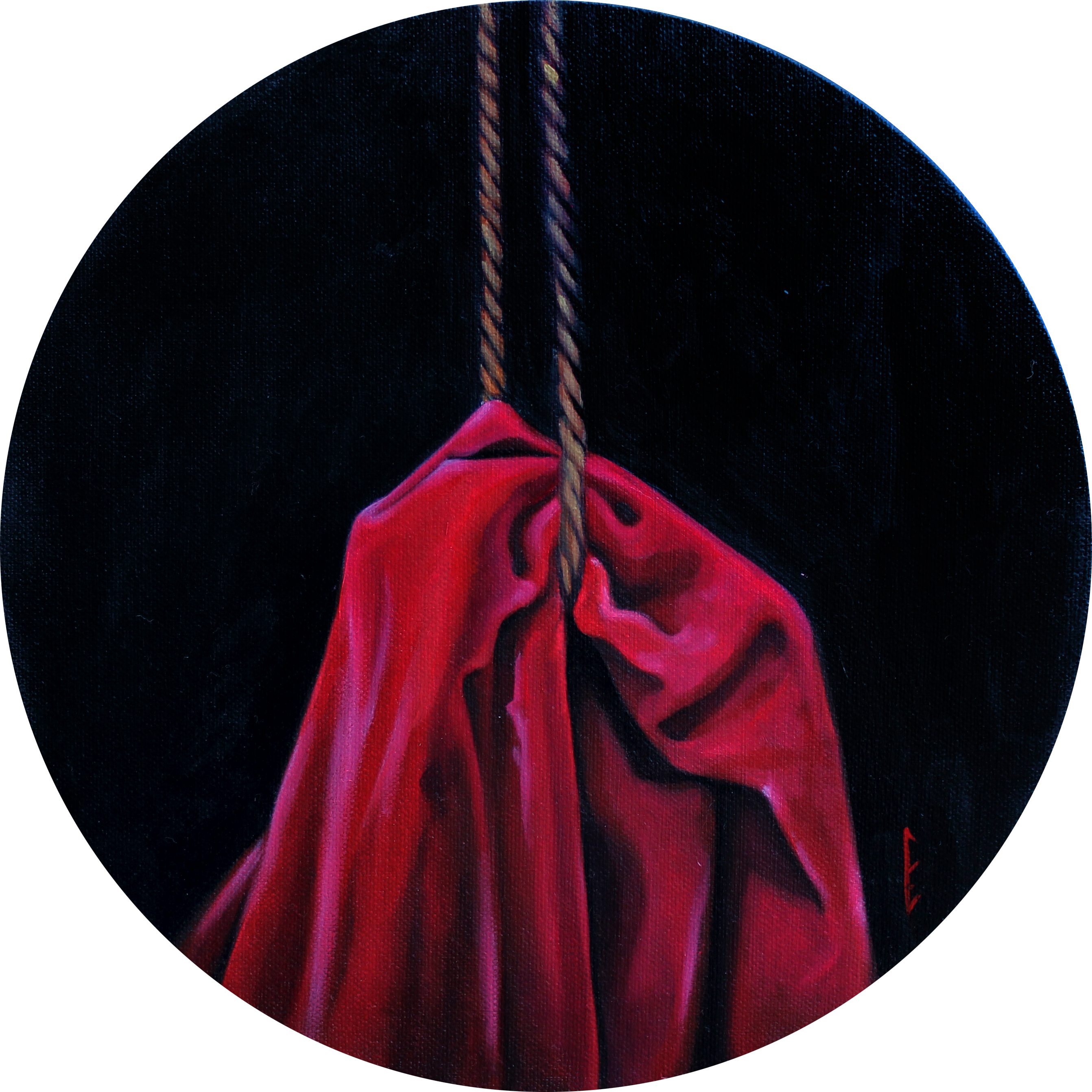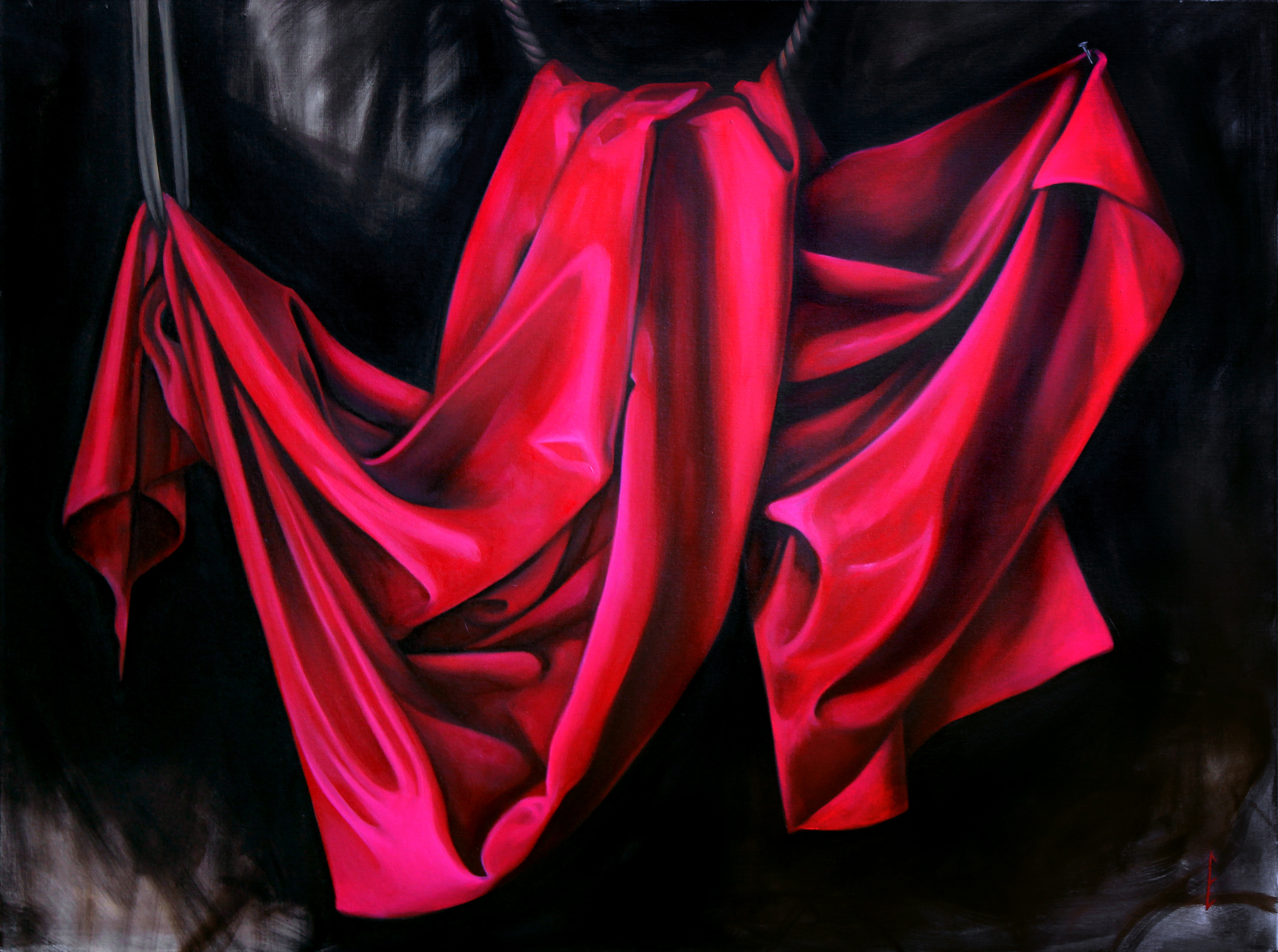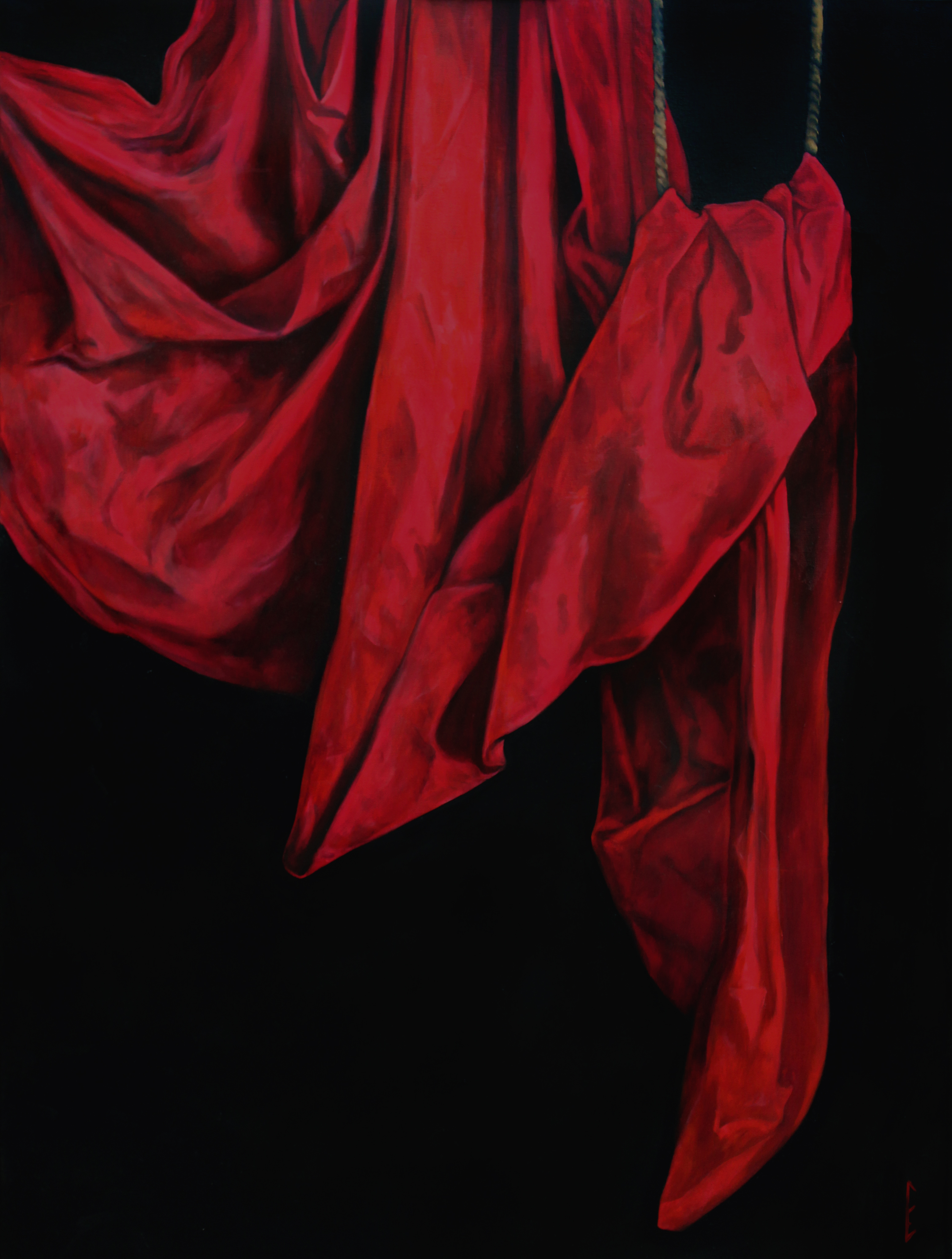![]() ~ Repoussoir
~ Repoussoir

15 MAY - 01 JUN 2019
Trocadero Artspace - Suite 1, Level 1/119 Hopkins St, Footscray VIC 3011Inspired by drapery used as a compositional element in classical painting, to lead the eye of add drama; the framing has now become the subject. Explored in rich detail and lush colour, the tension of the suspended object leaves no room for narrative outside the title. Instead, viewer is left wanting for the tale to unfold.
Artworks:







Exhibition: